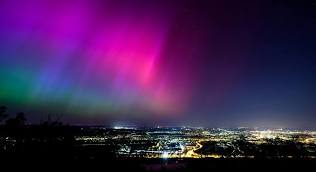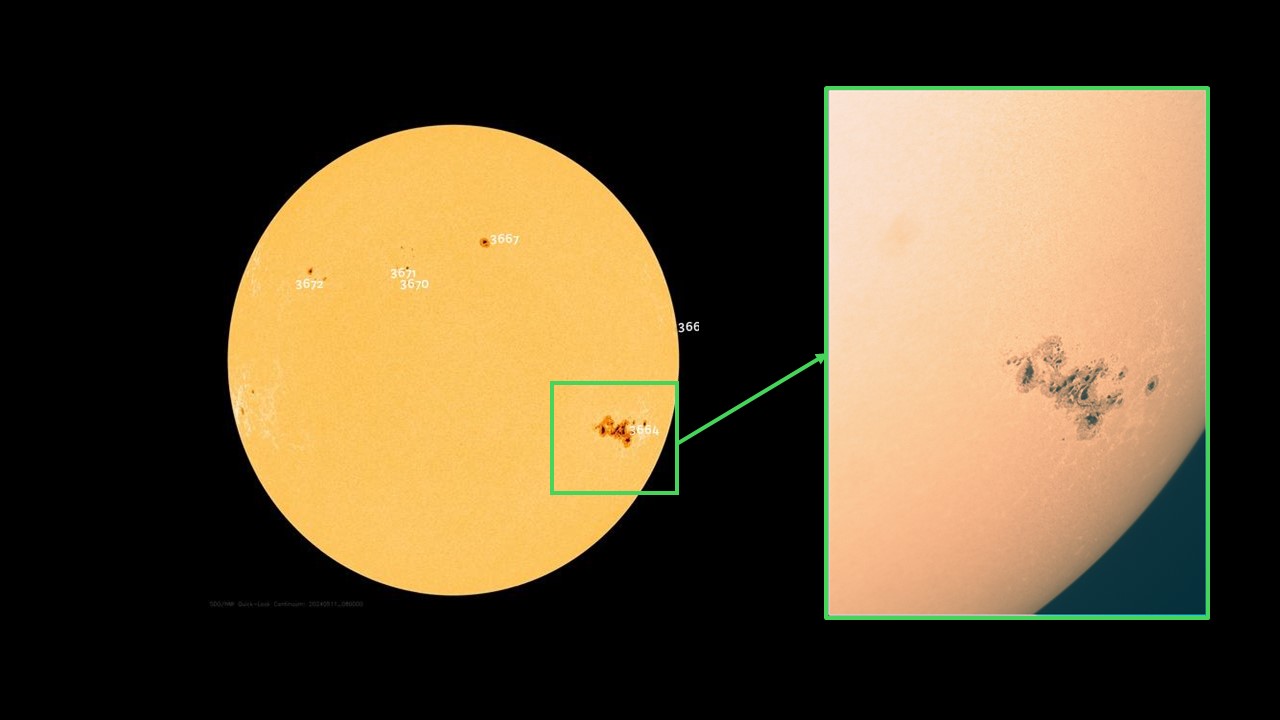You may have been lucky to witness the magnificent Aurora Borealis, which occurred on the night of May 10th to 11th, 2024. What made this Aurora Borealis notable was its visibility far south in the Northern Hemisphere (and far north in the Southern Hemisphere); typically, an Aurora Borealis is seen between 65 and 72 degrees North or South, but this time it was visible in France!

So why was this Aurora Borealis so brilliant? The Aurora Borealis, or Northern Lights, is produced by the interaction between the Earth's magnetic field and charged particles from the sun, known as the solar wind. These particles, primarily electrons and protons, are drawn toward the Earth's magnetic poles. When they collide with gases in Earth's atmosphere, such as oxygen and nitrogen, they transfer energy to these gases, causing them to light up. The resulting display, which can appear as curtains, rays, spirals, or dynamic patterns in the sky, emits different colors depending on the gas—oxygen typically emits green and red light, while nitrogen produces blue and purple light. The intensity of the auroras correlates with the solar cycle, becoming more intense during periods of high solar activity, which is currently the case, and are usually most visible in the polar regions.
The extraordinary aurora observed on the night of May 10th to 11th, 2024, was due to a significant solar storm. Sunspots and solar storms are closely linked phenomena resulting from solar activity. Sunspots, which are cooler, darker areas on the sun’s surface caused by intense magnetic activity, often serve as the sites for the generation of solar storms. These storms can include solar flares—a sudden increase in brightness due to the release of magnetic energy—and coronal mass ejections (CMEs), where large amounts of plasma and magnetic fields are expelled from the sun's corona. The intense magnetic fields in sunspots can become tangled, and when they snap back into a new alignment, release vast amounts of energy, leading to solar flares and potentially CMEs. The frequency of sunspots is thus a good indicator of potential solar storm activity, which can amplify the Earth's auroras, disrupt satellite operations, and affect communication and electrical infrastructures on Earth.

The sunspot responsible for the solar storm we observed is displayed in the image above. On the left is an image of the sun as seen today on the website SpaceWeatherLive; the image on the right is a zoomed view of the area of interest using our telescope and our CCD camera, captured on May 11th, 2024.
Post a comment
| Date | Name | Comment |
|---|